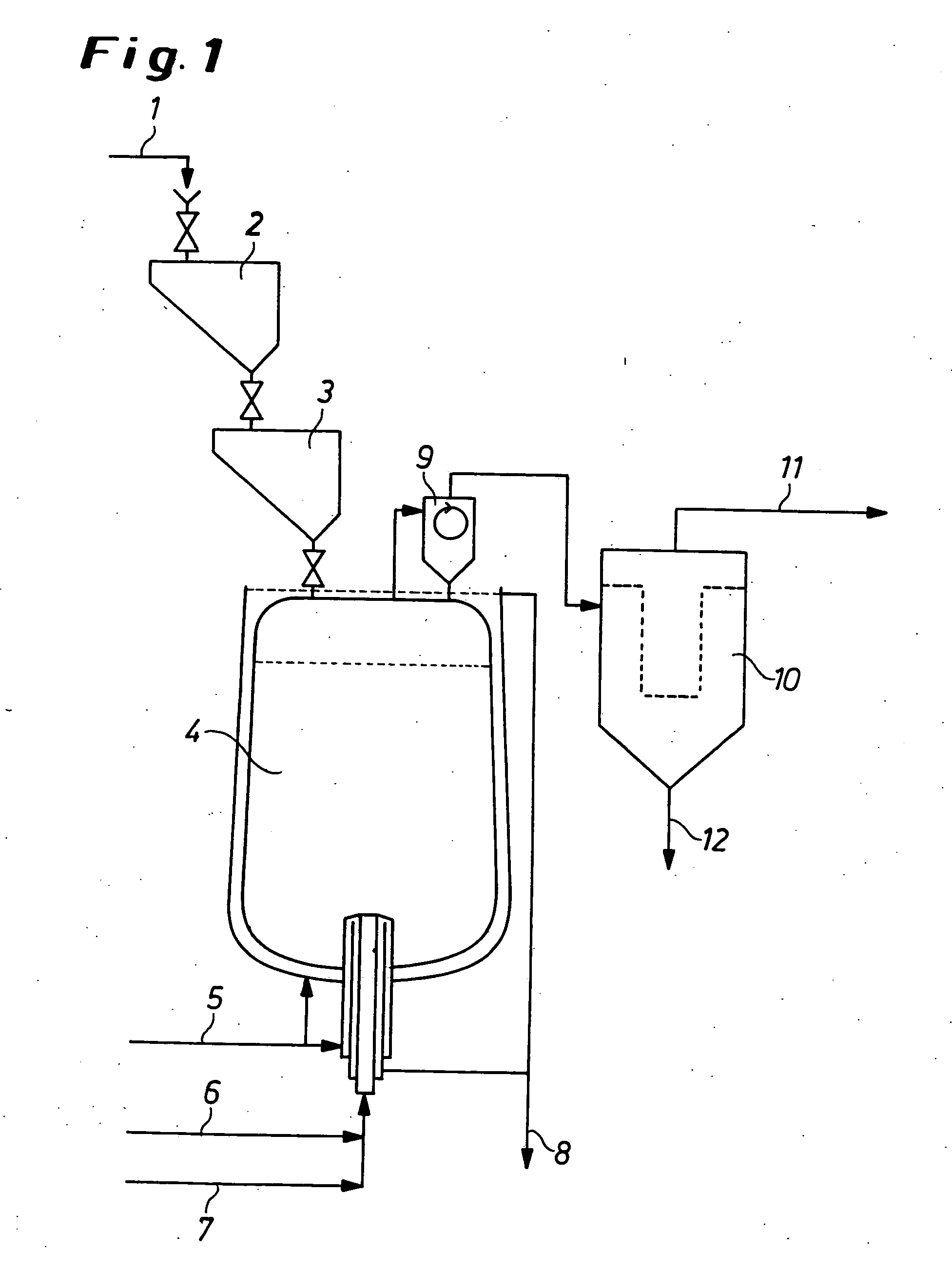CO generator
a generator and co-generation technology, applied in the direction of gasification process details, fuel cells, combustible gas production, etc., can solve the problems of not meeting the demands of an efficient continuous co-generation installation in many respects, complex elements built into the reactor, and high demands for energy saving and energy saving
- Summary
- Abstract
- Description
- Claims
- Application Information
AI Technical Summary
Benefits of technology
Problems solved by technology
Method used
Image
Examples
Embodiment Construction
[0035] Other than in the operating examples, or where otherwise indicated, all numbers or expressions referring to quantities of ingredients, reaction conditions, etc. used in the specification and claims are to be understood as modified in all instances by the term “about.” It has now been found, surprisingly, that the above-described objects can be achieved by the generator described in the following and the process described hereinbelow.
[0036] The present invention provides a generator comprising [0037] (I) a double-chamber lock consisting of two tapered or vertical chambers lined with ceramics or plastics, as the charging device, [0038] (II) at least one tubular shaft furnace consisting of a water-cooled double jacket of steel, [0039] (III) a double-walled, water-cooled inlet nozzle of pure copper for the gasification mixture, arranged centrally in the tubular shaft furnace just above the base, [0040] (IV) a dust-removing device, and also [0041] (V) optionally a desulfurising d...
PUM
| Property | Measurement | Unit |
|---|---|---|
| Length | aaaaa | aaaaa |
| Fraction | aaaaa | aaaaa |
| Fraction | aaaaa | aaaaa |
Abstract
Description
Claims
Application Information
 Login to View More
Login to View More - R&D
- Intellectual Property
- Life Sciences
- Materials
- Tech Scout
- Unparalleled Data Quality
- Higher Quality Content
- 60% Fewer Hallucinations
Browse by: Latest US Patents, China's latest patents, Technical Efficacy Thesaurus, Application Domain, Technology Topic, Popular Technical Reports.
© 2025 PatSnap. All rights reserved.Legal|Privacy policy|Modern Slavery Act Transparency Statement|Sitemap|About US| Contact US: help@patsnap.com


